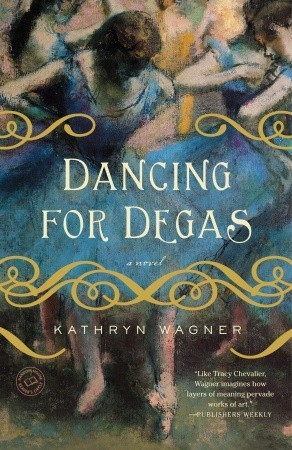The next meeting will be Tuesday, May 26th at
6:30pm and the topic up for discussion will be the novels of Louis
L’Amour. Pick any of his books and come
tell us about it! Due to a scheduling
conflict, our June meeting will be canceled.
On the bright side, you’ll have two whole months to select and read the
perfect book on Real Life Adventures for the July meeting. I’ll be bringing a selection of those for
your perusal to the May meeting.

Gentlemen Bootleggers: The True Story of Templeton Rye,Prohibition, and a Small Town in Cahoots by Bryce T. Bauer
(amazon)
During Prohibition, while Al Capone was rising to worldwide prominence as
Public Enemy Number One, the townspeople of rural Templeton, Iowa—population
just 428—were busy with a bootlegging empire of their own. Led by Joe Irlbeck,
the whip-smart and gregarious son of a Bavarian immigrant, the outfit of
farmers, small merchants, and even the church monsignor worked together to
create a whiskey so excellent it was ordered by name: "Templeton rye."
Just
as Al Capone had Eliot Ness, Templeton’s bootleggers had as their own enemy a
respected Prohibition agent from the adjacent county named Benjamin Franklin
Wilson. Wilson was ardent in his fight against alcohol, and he chased Irlbeck
for over a decade. But Irlbeck was not Capone, and Templeton would not be ruled
by violence like Chicago.
Gentlemen
Bootleggers tells a
never-before-told tale of ingenuity, bootstrapping, and perseverance in one
small town, showcasing a group of immigrants and first-generation Americans who
embraced the ideals of self-reliance, dynamism, and democratic justice. It
relies on previously classified Prohibition Bureau investigation files, federal
court case files, extensive newspaper archive research, and a recently
disclosed interview with kingpin Joe Irlbeck. Unlike other Prohibition-era
tales of big-city gangsters, it provides an important reminder that bootlegging
wasn’t only about glory and riches, but could be in the service of a higher
goal: producing the best whiskey money could buy.

Dillinger’s Wild Ride: The Year That Made America’s Public Enemy Number One by Elliott J. Gorn
(amazon) In an era that
witnessed the rise of celebrity outlaws like Baby Face Nelson, Pretty Boy
Floyd, and Bonnie and Clyde, John Dillinger was the most famous and flamboyant
of them all. Reports on the man and his misdeeds - spiced with accounts of his
swashbuckling bravado and cool daring - provided an America worn down by the
Great Depression with a salacious mix of sex and violence that proved irresistible.
In Dillinger's Wild Ride, Elliott J. Gorn provides a riveting account of the
year between 1933 and 1934, when the Dillinger gang pulled over a dozen bank
jobs and stole hundreds of thousands of dollars. A dozen men - police, FBI
agents, gangsters, and civilians - lost their lives in the rampage, and
American newspapers breathlessly followed every shooting and jail-break. As
Dillinger's wild year unfolded, the tale grew larger and larger in newspapers
and newsreels, and even today, Dillinger is the subject of pulp literature,
serious poetry and fiction, and film. What is the power of his story? Why has
it lingered so long? Who was John Dillinger? Gorn illuminates the significance
of Dillinger's tremendous fame and the endurance of his legacy, arguing that he
represented an American fascination with primitive freedom against social
convention. Dillinger's story has much to tell us about our enduring
fascination with outlaws, crime and violence, about the complexity of our
transition from rural to urban life, and about the transformation of America
during the Great Depression.
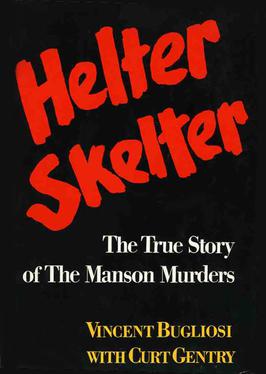
Helter Skelter: The True Story of the Manson Murders by Vincent Bugliosi
(amazon)
In the summer of 1969, in Los Angeles, a series of brutal, seemingly random
murders captured headlines across America. A famous actress (and her unborn
child), an heiress to a coffee fortune, a supermarket owner and his wife were
among the seven victims. A thin trail of circumstances eventually tied the
Tate-LeBianca murders to Charles Manson, a would-be pop singer of small talent
living in the desert with his "family" of devoted young women and
men. What was his hold over them? And what was the motivation behind such
savagery? In the public imagination, over time, the case assumed the proportions
of myth. The murders marked the end of the sixties and became an immediate
symbol of the dark underside of that era.
Vincent Bugliosi was
the prosecuting attorney in the Manson trial, and this book is his enthralling
account of how he built his case from what a defense attorney dismissed as only
"two fingerprints and Vince Bugliosi." The meticulous detective work
with which the story begins, the prosecutor's view of a complex murder trial,
the reconstruction of the philosophy Manson inculcated in his fervent followers...
these elements make for a true crime classic. ?Helter Skelter ?is
not merely a spellbinding murder case and courtroom drama but also, in the
words of ?The New Republic?, a "social document of rare
importance." 50 pages of black-and-white
photographs

In Cold Blood by Truman Capote
(amazon) On November 15, 1959,
in the small town of Holcomb, Kansas, four members of the Clutter family were
savagely murdered by blasts from a shotgun held a few inches from their faces.
There was no apparent motive for the crime, and there were almost no
clues.
As
Truman Capote reconstructs the murder and the investigation that led to the
capture, trial, and execution of the killers, he generates both mesmerizing
suspense and astonishing empathy. In
Cold Blood is a work that
transcends its moment, yielding poignant insights into the nature of American
violence.
Fatal Vision: The Last Word on Jeffrey MacDonald by Joe McGinniss
(amazon) Fatal
Vision is the electrifying true story of Dr. Jeffrey MacDonald, the
handsome, Princeton-educated physician convicted of savagely slaying his young
pregnant wife and two small children, murders he vehemently denies committing. Bestselling author Joe McGinniss chronicles
every aspect of this horrifying and intricate crime, and probes the life and psyche
of the magnetic, all-American Jeffrey MacDonald, a golden boy who seemed
destined to have it all. The result is a penetration to the heart of darkness
that enshrouded one of the most complex criminal cases ever to capture the
attention of the American public. It is a haunting, stunningly suspenseful work
that no reader will be able to forget.

Two of a Kind: The Hillside Stranglers by Darcy
O’Brien
(amazon) The "Hillside Strangler"
became an everyday headline that frightened Los Angeles for a year or so in the
late 1970's. During that year, bodies of young women started showing up on the
hillsides around the city. But the horror waned beside the revelations that
came to light in what became the longest criminal trial in American
history--BEFORE O. J. Simpson's 1994 trial--and one of the most controversial
The Hillside Strangler was thought to be one person with a real fast pace in
killing. With TWO OF A KIND, Darcy O'Brien gives the inside story and is the
first book to make the shocking disclosure that "the Hillside
Strangler" was not one man, but two, and not only that -- they were were
cousins! In Mr. O'Brien's riveting story examines the relationship between the
murderers and the drive behind their hideously evil crimes. It tells the entire
story of the Hillside Stranglers as it has never been told before. He begins
with the stranglers themselves who just decided one night out of boredom that
they hated women and wanted to kill them (even as one strangler was living with
a pregnant girlfriend and hiding the truth of his killing spree from her).

The Minds of Billy Milligan by Daniel Keyes
(amazon) A portrait of a tortured young man,
arrested for a series of kidnappings and rapes, explores the world of a
multiple personality, whose traumatic childhood shattered his mind into
twenty-four distinct personalities.
Daniel Keyes is also the author of Flowers for Algernon.

Bitter Harvest by Ann Rule
(amazon) In this harrowing New York Times bestseller, Ann Rule is at her
masterful best as she winnows horrific truths from the ashes of what seemed
like paradise in Prairie Village, Kansas. Rule probes the case of Debora Green,
a doctor and a loving mother who seemed to epitomize the dreams of the American
heartland. A small-town girl with a genius IQ, she achieved an enviable life:
her own medical practice, a handsome physician husband, three perfect children,
and an opulent home in an exclusive Kansas City suburb. But when a raging fire
destroyed that home and took two lives, the trail of clues led investigators to
a stunning conclusion. Piece by piece, Ann Rule digs beneath this placid
Midwestern facade to unveil a disturbing portrait of strangely troubled
marriages, infidelity, desperation, suicide, and escalating acts of revenge
that forever changed dozens of lives.
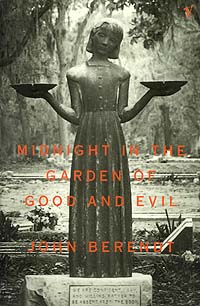
Midnight in the Garden of Good and Evil by John
Berendt
(amazon) Shots rang out in Savannah's grandest
mansion in the misty,early morning hours of May 2, 1981. Was it
murder or self-defense? For nearly a decade, the shooting and its
aftermath reverberated throughout this hauntingly beautiful city of moss-hung
oaks and shaded squares. John Berendt's sharply observed,
suspenseful, and witty narrative reads like a thoroughly engrossing novel, and
yet it is a work of nonfiction. Berendt skillfully interweaves a
hugely entertaining first-person account of life in this isolated remnant of
the Old South with the unpredictable twists and turns of a landmark murder
case.
It is a spellbinding story peopled by a gallery of remarkable characters: the well-bred society ladies of the Married Woman's Card Club; the turbulent young redneck gigolo; the hapless recluse who owns a bottle of poison so powerful it could kill every man, woman, and child in Savannah; the aging and profane Southern belle who is the "soul of pampered self-absorption"; the uproariously funny black drag queen; the acerbic and arrogant antiques dealer; the sweet-talking, piano-playing con artist; young blacks dancing the minuet at the black debutante ball; and Minerva, the voodoo priestess who works her magic in the graveyard at midnight. These and other Savannahians act as a Greek chorus, with Berendt revealing the alliances, hostilities, and intrigues that thrive in a town where everyone knows everyone else.
Midnight in the Garden of Good and Evil is a sublime and seductive reading experience. Brilliantly conceived and masterfully written, this enormously engaging portrait of a most beguiling Southern city has become a modern classic.
It is a spellbinding story peopled by a gallery of remarkable characters: the well-bred society ladies of the Married Woman's Card Club; the turbulent young redneck gigolo; the hapless recluse who owns a bottle of poison so powerful it could kill every man, woman, and child in Savannah; the aging and profane Southern belle who is the "soul of pampered self-absorption"; the uproariously funny black drag queen; the acerbic and arrogant antiques dealer; the sweet-talking, piano-playing con artist; young blacks dancing the minuet at the black debutante ball; and Minerva, the voodoo priestess who works her magic in the graveyard at midnight. These and other Savannahians act as a Greek chorus, with Berendt revealing the alliances, hostilities, and intrigues that thrive in a town where everyone knows everyone else.
Midnight in the Garden of Good and Evil is a sublime and seductive reading experience. Brilliantly conceived and masterfully written, this enormously engaging portrait of a most beguiling Southern city has become a modern classic.
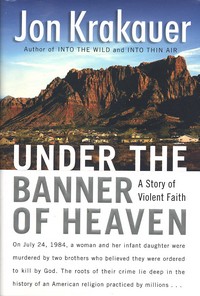
Under the Banner of Heaven: A Story of ViolentFaith by Jon Krakauer
(amazon) Jon Krakauer’s literary reputation
rests on insightful chronicles of lives conducted at the outer limits. He now
shifts his focus from extremes of physical adventure to extremes of religious
belief within our own borders, taking readers inside isolated American
communities where some 40,000 Mormon Fundamentalists still practice polygamy.
Defying both civil authorities and the Mormon establishment in Salt Lake City,
the renegade leaders of these Taliban-like theocracies are zealots who answer
only to God.
At the core of Krakauer’s book are brothers Ron and Dan Lafferty, who insist they received a commandment from God to kill a blameless woman and her baby girl. Beginning with a meticulously researched account of this appalling double murder, Krakauer constructs a multi-layered, bone-chilling narrative of messianic delusion, polygamy, savage violence, and unyielding faith. Along the way he uncovers a shadowy offshoot of America’s fastest growing religion, and raises provocative questions about the nature of religious belief.
At the core of Krakauer’s book are brothers Ron and Dan Lafferty, who insist they received a commandment from God to kill a blameless woman and her baby girl. Beginning with a meticulously researched account of this appalling double murder, Krakauer constructs a multi-layered, bone-chilling narrative of messianic delusion, polygamy, savage violence, and unyielding faith. Along the way he uncovers a shadowy offshoot of America’s fastest growing religion, and raises provocative questions about the nature of religious belief.

Cruel Death by M. William Phelps
(amazon) It was Memorial Day weekend, the start
of the summer season. Thousands headed to Ocean City, Maryland, to enjoy its
scenic beaches, lively boardwalk, and trendy nightclubs. Among the
bright-spirited vacationers was a couple with a much darker idea of fun. Erica
Sifrit, a former honor student, was packing a gun in her Coach bag. Her
husband, B.J., an ex-Navy SEAL, was trained in violence. What started as a
chance encounter with another couple ended with two dismembered victims buried
in a Delaware landfill. M. William Phelps updates this modern-day "Bonnie
and Clyde" saga to create a haunting account of money, madness, sex, and
murder. . .

Righteous Carnage: The List Murders in Westfield by Timothy
Benford
(amazon) At about 9 oclock on the morning of
November 9, 1971, soon after sending her three children off to school, Helen
List sat in the kitchen drinking a cup of coffee. She was still in her
nightgown and slippers.John List came up behind her and put a 9mm German-made
Steyr automatic pistol to the side of her head and fired once. She died
instantly. The bullet smashed into the opposite wall... John made his way up
the stairs to the third floor where his 85-year old mother, Alma, wearing a
housedress, was preparing breakfast in her efficiency kitchen She was standing
near the storage room that adjoined her kitchen when a 9mm bullet ripped
through the side of her scull. Alma List was dead before her body crumpled in a
heap on the floor, the righteous carnage had begun.
True Crime Authors of Note:
Remember these TV shows?

America’s Most Wanted, hosted by John Walsh,
dramatized true crimes in hopes that viewers could give information leading to
the solving of crimes. It aired for 23
years, from 1988 to 2011.

Unsolved Mysteries, hosted by Robert Stack,
investigated mysteries of all kinds ranging from murders to UFO sightings. It also aired for 23 years, from 1987 to
2010.

Bonnie and Clyde (DVD, 1967)
(rottentomatoes.com) Producer/star Warren
Beatty had to convince Warner Bros. to finance this film, which went on to
become the studio's second-highest grosser. It also caused major controversy by
redefining violence in cinema and casting its criminal protagonists as
sympathetic anti-heroes. Based loosely on the true exploits of Clyde Barrow and
Bonnie Parker during the 30s, the film begins as Clyde (Beatty) tries to steal
the car of Bonnie Parker (Faye Dunaway)'s mother. Bonnie is excited by Clyde's
outlaw demeanor, and he further
stimulates her by robbing a store in her presence. Clyde steals a car, with
Bonnie in tow, and their legendary crime spree begins. The two move from town
to town, pulling off small heists, until they join up with Clyde's brother Buck
(Gene Hackman), his shrill wife Blanche (Estelle Parsons), and a slow-witted
gas station attendant named C.W. Moss (Michael J. Pollard). The new gang robs a
bank and Clyde is soon painted in the press as a Depression-era Robin Hood when
he allows one bank customer to hold onto his money. Soon the police are on the
gang's trail and they are constantly on the run, even kidnapping a Texas Ranger
(Denver Pyle) and setting him adrift on a raft, handcuffed, after he spits in
Bonnie's face when she kisses him. That same ranger leads a later raid on the
gang that leaves Buck dying, Blanche captured, and both Clyde and Bonnie
injured. The ever-loyal C.W. takes them to his father's house. C.W.'s father disaproves
his son's affiliation with gangsters and enters a plea bargain with the Texas
Rangers. A trap is set that ends in one of the bloodiest death scenes in
cinematic history. The film made stars out of Beatty and Dunaway, and it also
featured the screen debut of Gene Wilder as a mortician briefly captured by the
gang. Its portrayal of Bonnie and Clyde as rebels who empathized with the poor
working folks of the 1930s struck a chord with the counterculture of the 1960s
and helped generate a new, young audience for American movies that carried over
into Hollywood's renewal of the 1970s. Its combination of sex and violence with
dynamic stars, social relevance, a traditional Hollywood genre, and an appeal
to hip young audiences set the pace for many American movies to come. ~ Don
Kaye, Rovi

Dead Man Walking (DVD, 1995)
Tim Robbins' second directorial effort (after
the political satire Bob Roberts) was this drama based on a true story, which
explores the issue of capital punishment. Sister Helen Prejean (Susan Sarandon)
is a nun and teacher living in rural Louisiana. One day, she receives a letter
from Matthew Poncelet (Sean Penn), who is scheduled to be executed soon for the
rape and murder of two teenagers. After meeting Matthew, Sister Helen agrees to
serve as spiritual counselor and see what she can do to stay the execution. However, Matthew's
claims of innocence seem shaky at best, and it's clear he's a reprehensible,
amoral racist. When it becomes obvious that Matthew's sentence will be carried
out, Sister Helen offers what comfort she can to Matthew, but also tries to
guide him to an open admission of the extent of his crimes and an acceptance of
divine forgiveness, telling him "I want the last face you see to be the
face of love." Susan Sarandon won an Oscar for her performance as Sister
Prejean, and Sean Penn was similarly nominated for Best Actor as Matthew. ~
Mark Deming, Rovi

The Girl Next Door (DVD, 1997)
(rottentomatoes) Based on the harrowingbest-seller by author Jack Ketchum, director Gregory Wilson's The Girl Next
Door presents a fictionalized account of the shocking ordeal endured by Sylvia
Likens -- an innocent Indiana teen who was systematically tortured, raped, and
murdered by a suburban divorcée and a group of neighborhood children in 1965. Shortly
after losing their parents in a deadly car accident, Meg Laughlin (Blythe
Auffarth) and her younger sister, Susan (Madeline Taylor), are sent to live in
the Indiana home of Ruth Chandler (Blanche Baker) and her three sons, Willie
(Graham Patrick Martin), Donny (Benjamin Ross Kaplan), and Ralphie (Austin
Williams). Upon arriving in the quiet suburban neighborhood, Meg quickly forges
a warm bond with local neighbor boy David Moran (Daniel Manche). Strangely,
Ruth seems to harbor some sort of unknown grudge against her pretty young
charge, and it isn't long before events in the Chandler home begin to take an
ominous turn. Now, as Ruth Chandler begins her slow descent into madness, the
basement of a typical middle-class home is about to become the scene of a crime
that would shock and repulse an entire nation.

An American Crime (DVD, 2007)
(rottentomatoes) The true story of a young girl
held captive by her insane caretaker comes to life in this disturbing film from
Ella Enchanted director Tommy O'Haver. Hard Candy's Ellen Page stars as Sylvia
Likens a teenager who, along with her sister, is left to live temporarily with
seemingly-mild-mannered housewife Gertrude Baniszewski, played by Catherine
Keener. Unfortunately for Sylvia, Gertrude soon snaps and holds her hostage in
harsh conditions until the former's eventual death. Bradley Whitford costars as the prosecutor tasked with trying
the case against Baniszewski.

Psycho USA: Famous American Killers You Never Heard Of by Harold Schechter
(amazon) In the horrifying
annals of American crime, the infamous names of brutal killers such as Bundy,
Dahmer, Gacy, and Berkowitz are writ large in the imaginations of a public both
horrified and hypnotized by their monstrous, murderous acts. But for every
celebrity psychopath who’s gotten ink for spilling blood, there’s a bevy of
all-but-forgotten homicidal fiends studding the bloody margins of U.S. history.
The law gave them their just desserts, but now the hugely acclaimed author of The Serial Killer Files and The Whole Death Catalog gives them their dark due in this
absolutely riveting true-crime treasury. Among America’s most cold-blooded
you’ll meet
• Robert Irwin, “The Mad Sculptor”: He longed to use his carving skills on the woman he loved—but had to settle for making short work of her mother and sister instead.
• Peter Robinson, “The Tell-Tale Heart Killer”: It took two days and four tries for him to finish off his victim, but no time at all for keen-eyed cops to spot the fatal flaw in his floor plan.
• Anton Probst, “The Monster in the Shape of a Man”: The ax-murdering immigrant’s systematic slaughter of all eight members of a Pennsylvania farm family matched the savagery of the Manson murders a century later.
• Edward H. Ruloff, “The Man of Two Lives”: A genuine Jekyll and Hyde, his brilliant scholarship disguised his bloodthirsty brutality, and his oversized brain gave new meaning to “mastermind.”
Spurred by profit, passion, paranoia, or perverse pleasure, these killers—the Witch of Staten Island, the Smutty Nose Butcher, the Bluebeard of Quiet Dell, and many others—span three centuries and a host of harrowing murder methods. Dramatized in the pages of penny dreadfuls, sensationalized in tabloid headlines, and immortalized in “murder ballads” and classic fiction by Edgar Allan Poe and Theodore Dreiser, the demonic denizens of Psycho USA may be long gone to the gallows—but this insidiously irresistible slice of gothic Americana will ensure that they’ll no longer be forgotten.
• Robert Irwin, “The Mad Sculptor”: He longed to use his carving skills on the woman he loved—but had to settle for making short work of her mother and sister instead.
• Peter Robinson, “The Tell-Tale Heart Killer”: It took two days and four tries for him to finish off his victim, but no time at all for keen-eyed cops to spot the fatal flaw in his floor plan.
• Anton Probst, “The Monster in the Shape of a Man”: The ax-murdering immigrant’s systematic slaughter of all eight members of a Pennsylvania farm family matched the savagery of the Manson murders a century later.
• Edward H. Ruloff, “The Man of Two Lives”: A genuine Jekyll and Hyde, his brilliant scholarship disguised his bloodthirsty brutality, and his oversized brain gave new meaning to “mastermind.”
Spurred by profit, passion, paranoia, or perverse pleasure, these killers—the Witch of Staten Island, the Smutty Nose Butcher, the Bluebeard of Quiet Dell, and many others—span three centuries and a host of harrowing murder methods. Dramatized in the pages of penny dreadfuls, sensationalized in tabloid headlines, and immortalized in “murder ballads” and classic fiction by Edgar Allan Poe and Theodore Dreiser, the demonic denizens of Psycho USA may be long gone to the gallows—but this insidiously irresistible slice of gothic Americana will ensure that they’ll no longer be forgotten.
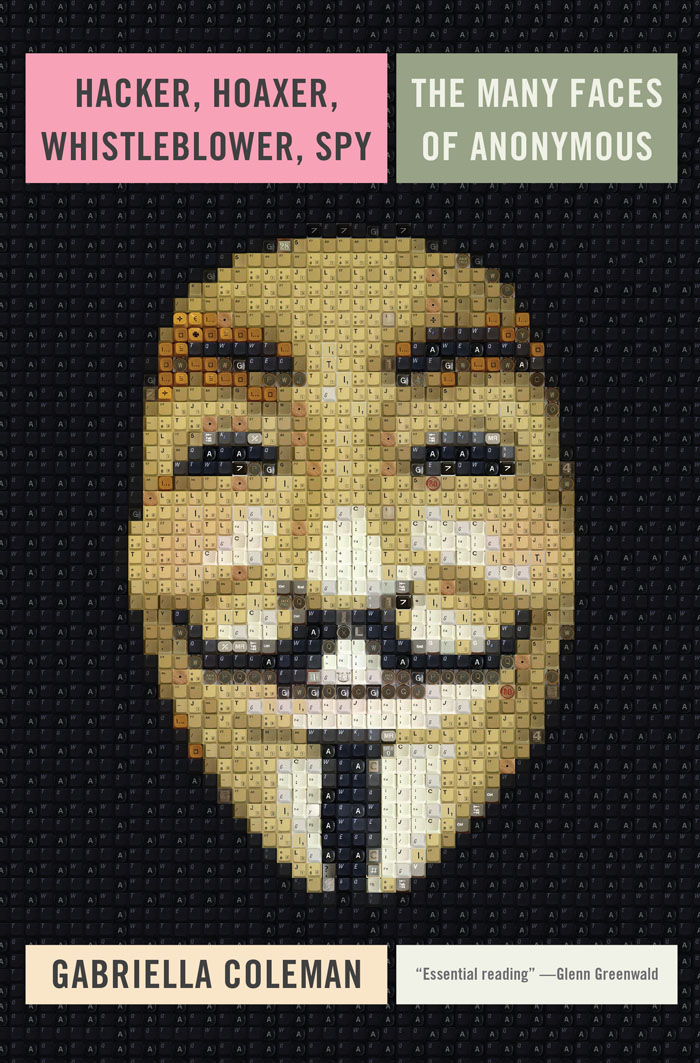
Hacker, Hoaxer, Whistleblower, Spy: The Many Faces of Anonymous by Gabriella Coleman
(amazon) Here is the ultimate book on the
worldwide movement of hackers, pranksters, and activists that operates under
the non-name Anonymous, by the writer the Huffington
Post says “knows all of
Anonymous’ deepest, darkest secrets.”
The narrative brims with details unearthed from within a notoriously mysterious subculture, whose semi-legendary tricksters—such as Topiary, tflow, Anachaos, and Sabu—emerge as complex, diverse, politically and culturally sophisticated people. Propelled by years of chats and encounters with a multitude of hackers, including imprisoned activist Jeremy Hammond and the double agent who helped put him away, Hector Monsegur, Hacker, Hoaxer, Whistleblower, Spy is filled with insights into the meaning of digital activism and little understood facets of culture in the Internet age, including the history of “trolling,” the ethics and metaphysics of hacking, and the origins and manifold meanings of “the lulz.”
The narrative brims with details unearthed from within a notoriously mysterious subculture, whose semi-legendary tricksters—such as Topiary, tflow, Anachaos, and Sabu—emerge as complex, diverse, politically and culturally sophisticated people. Propelled by years of chats and encounters with a multitude of hackers, including imprisoned activist Jeremy Hammond and the double agent who helped put him away, Hector Monsegur, Hacker, Hoaxer, Whistleblower, Spy is filled with insights into the meaning of digital activism and little understood facets of culture in the Internet age, including the history of “trolling,” the ethics and metaphysics of hacking, and the origins and manifold meanings of “the lulz.”

Future Crimes: Everything is Connected,Everyone is Vulnerable and What We Can Do About It by Marc Goodman
(amazon) Future
Crimes provides a
mind-blowing glimpse into the dark side of technological innovation and the
unintended consequences of our connected world. Goodman offers a way out with
clear steps we must take to survive the progress unfolding before us.
Provocative, thrilling, and ultimately empowering, Future Crimes will serve as an urgent call to action
that shows how we can take back control over our own devices and harness
technology’s tremendous power for the betterment of humanity—before it’s too
late.

Imitation Game (DVD, 2014)
(rottentomatoes) During the winter of
1952, British authorities entered the home of mathematician, cryptanalyst and
war hero Alan Turing (Benedict Cumberbatch) to investigate a reported burglary.
They instead ended up arresting Turing himself on charges of 'gross indecency',
an accusation that would lead to his devastating conviction for the criminal
offense of homosexuality - little did officials know, they were actually
incriminating the pioneer of modern-day computing. Famously leading a motley
group of scholars, linguists,
chess champions and intelligence officers, he was credited with cracking the
so-called unbreakable codes of Germany's World War II Enigma machine. An
intense and haunting portrayal of a brilliant, complicated man, The Imitation Game follows a genius who under nail-biting pressure helped to shorten the war
and, in turn, save thousands of lives. (c) Weinstein

Tinseltown: Murder, Morphine, and Madness at the Dawn of Hollywood by William J. Mann
(amazon) The Day of the Locust meets The Devil in the White City and Midnight in the Garden of Good and Evil in
this juicy, untold Hollywood story: an addictive true tale of ambition,
scandal, intrigue, murder, and the creation of the modern film industry.
By 1920, the movies
had suddenly become America’s new favorite pastime, and one of the nation’s
largest industries. Never before had a medium possessed such power to
influence. Yet Hollywood’s glittering ascendancy was threatened by a string of
headline-grabbing tragedies—including the murder of William Desmond Taylor, the
popular president of the Motion Picture Directors Association, a legendary
crime that has remained unsolved until now.
In a fiendishly
involving narrative, bestselling Hollywood chronicler William J. Mann draws on
a rich host of sources, including recently released FBI files, to unpack the
story of the enigmatic Taylor and the diverse cast that surrounded him—including
three beautiful, ambitious actresses; a grasping stage mother; a devoted valet;
and a gang of two-bit thugs, any of whom might have fired the fatal bullet. And
overseeing this entire landscape of intrigue was Adolph Zukor, the brilliant
and ruthless founder of Paramount, locked in a struggle for control of the
industry and desperate to conceal the truth about the crime. Along the way,
Mann brings to life Los Angeles in the Roaring Twenties: a sparkling yet
schizophrenic town filled with party girls, drug dealers, religious zealots,
newly-minted legends and starlets already past their prime—a dangerous place
where the powerful could still run afoul of the desperate.
A true story recreated
with the suspense of a novel, Tinseltown is the work of a storyteller
at the peak of his powers—and the solution to a crime that has stumped
detectives and historians for nearly a century.
UPDATE!!! Yesterday, April 29th, Tinseltown won the Edgar Award for Best Fact Crime!!!

The Great Pearl Heist: London’s Greatest Thief andScotland Yard’s Hunt for the World’s Most Valuable Necklace by Molly Caldwell
Crosby
(amazon) London, 1913. An
exquisite strand of pale pink pearls, worth more than the Hope Diamond, has
been bought by a Hatton Garden broker, capturing the attention of both jewelers
and thieves. In transit to London from Paris, the necklace vanishes without a
trace.
Joseph Grizzard, “the King of Fences,” is the leader of a vast gang of thieves in London’s East End. Having risen from the deadly streets to become a wealthy family man, Grizzard still cannot resist the sport of crime, and the pearl necklace proves an irresistible challenge.
Inspector Alfred Ward has joined the brand-new division of the Metropolitan Police known as “detectives.” Having caught some of the great murderers of Victorian London, Ward is now charged with finding the missing pearls and the thief who stole them.
In the spirit of The Great Train Robbery, this is the true story of a psychological cat-and-mouse game. Thoroughly researched and compellingly colorful, The Great Pearl Heist is a gripping narrative account of this little-known, yet extraordinary crime.
Joseph Grizzard, “the King of Fences,” is the leader of a vast gang of thieves in London’s East End. Having risen from the deadly streets to become a wealthy family man, Grizzard still cannot resist the sport of crime, and the pearl necklace proves an irresistible challenge.
Inspector Alfred Ward has joined the brand-new division of the Metropolitan Police known as “detectives.” Having caught some of the great murderers of Victorian London, Ward is now charged with finding the missing pearls and the thief who stole them.
In the spirit of The Great Train Robbery, this is the true story of a psychological cat-and-mouse game. Thoroughly researched and compellingly colorful, The Great Pearl Heist is a gripping narrative account of this little-known, yet extraordinary crime.

Lincoln’s Grave Robbers by Steve Sheinkin
(amazon) The action begins in October of 1875,
as Secret Service agents raid the Fulton, Illinois, workshop of master
counterfeiter Ben Boyd. Soon after Boyd is hauled off to prison, members of his
counterfeiting ring gather in the back room of a smoky Chicago saloon to
discuss how to spring their ringleader. Their plan: grab Lincoln's body from
its Springfield tomb, stash it in the sand dunes near Lake Michigan, and
demand, as a ransom, the release of Ben Boyd --and $200,000 in cash. From here,
the action alternates between the conspirators, the Secret Service agents on
their trail, and the undercover agent moving back and forth between the two
groups. Along the way readers get glimpses into the inner workings of
counterfeiting, grave robbing, detective work, and the early days of the Secret
Service. The plot moves toward a wild climax as robbers and lawmen converge at
Lincoln's tomb on election night: November 7, 1876.
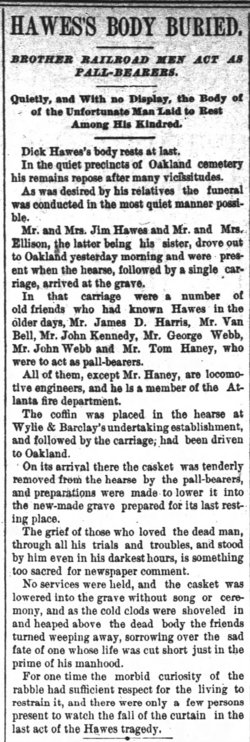
The Birmingham Horrors by William Stanley Hoole)
(The old-fashioned subtitle) Being a complete
and accurate account of Richard R. Hawes’s murder of his wife, Emma, and
daughters, May and Irene, in Birmingham, Alabama, on December 3-4, 1888, and
his casting their iron-weighted bodies into the lakes at East Lake and
Lakeview, together with the subsequent story of the Great Birmingham Riot of
December 8 during which an attempt was made by two thousand irate citizens to
storm the jail and lynch the accused murderer, resulting in the massacre of a
dozen citizens and the wounding of many more, and the mustering out of the
Alabama State Militia, and the eventual trial, conviction, and public hanging
of Hawes on February 28, 1890. (This is
a 1980 reprint of a late 1800’s original publication)

Bugsy (DVD, 1991)
(rottentomatoes) Brutal and batty as a
March hare, notorious gangster Bugsy Siegel played a crucial role in making Las
Vegas the gambling capitol of the United States. This arresting biopic starring
Warren Beatty offers a remarkably cliché-free look at the mobster's life and
times.

American Crime Story (Forthcoming TV show)
Slated to debut in October 2015, this new show
from the creators of, and following the same format as, American Horror Story,
plans to focus each 10-episode season on a different real-life crime. The first season will tackle the O.J. Simpson trial.
What are YOU reading?

















